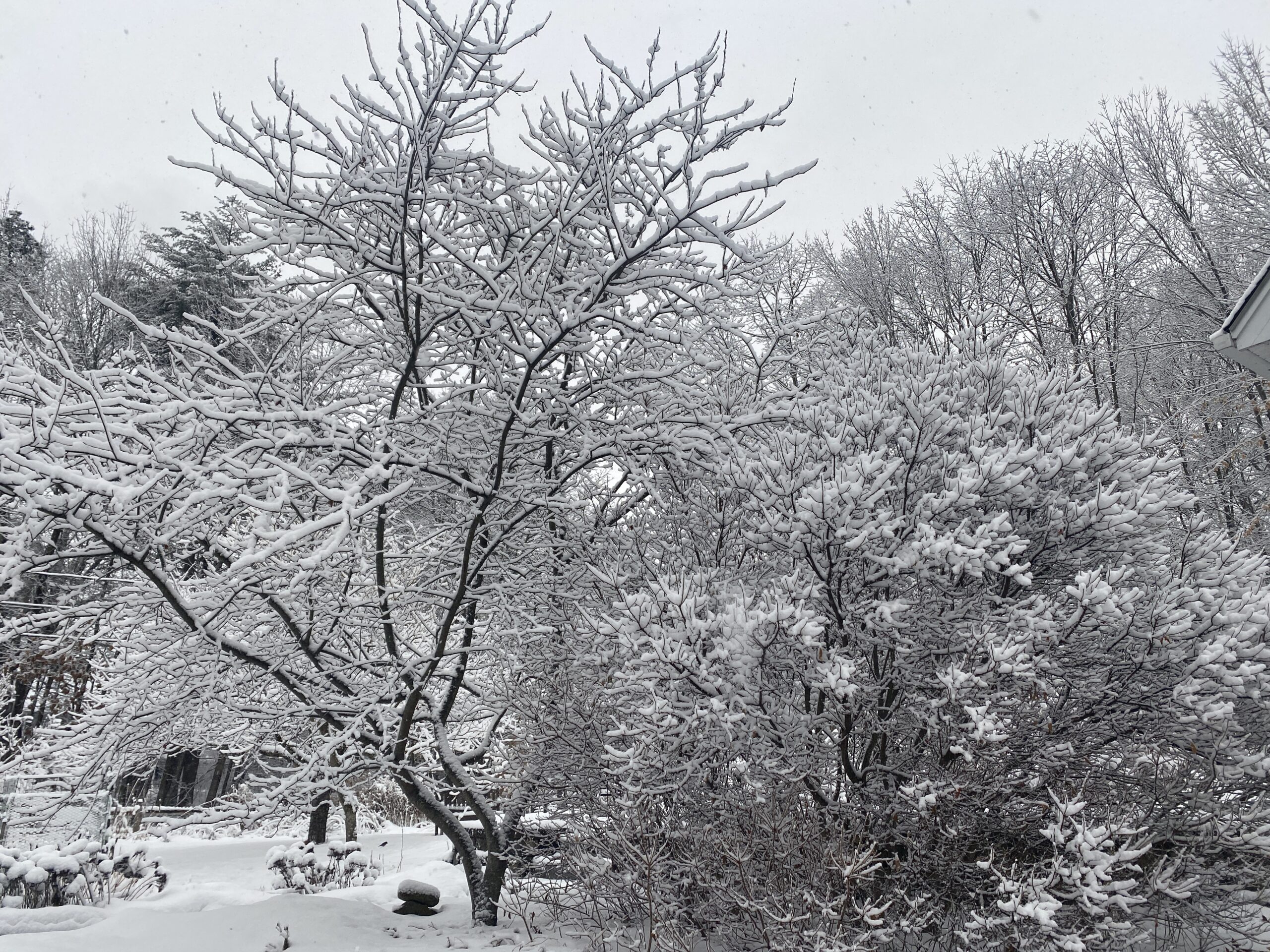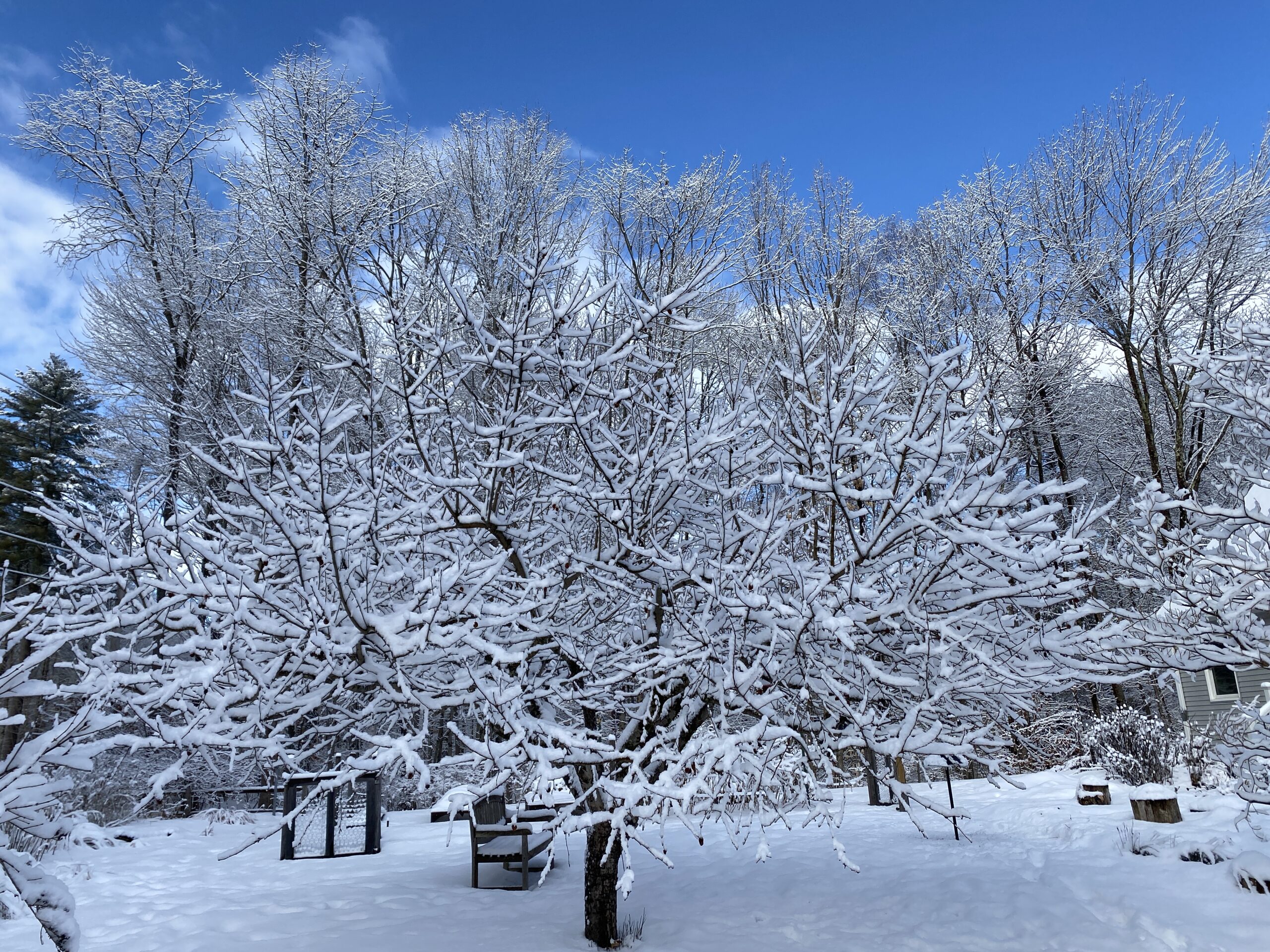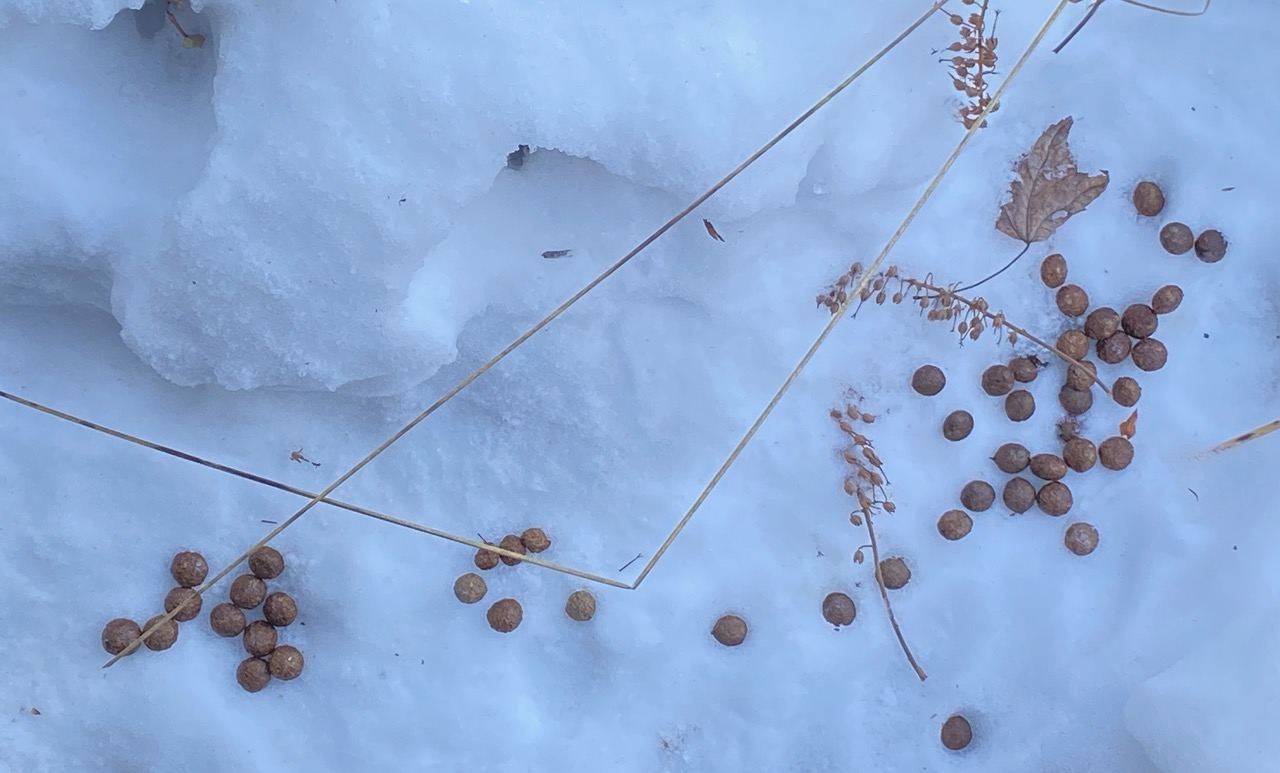Saturday, February 1, 2025
A few inches of wet snow this morning that continues til noon. February is starting off more wintry than January, which began with rain. Henna and I explored the road, while Srini cleared the driveway with the snowblower. The snow brings much needed light beneath a gray sky.
By afternoon, blue sky reigned and after nightfall the crescent moon and Venus shown brightly together above the trees in the western sky. Saturn was visible below that pair. Looking to the east, Mars was clear along with Taurus and Orion to the south.
We haven’t a new species visit the yard in awhile. But the regulars visit daily, including five bluebirds. A few days ago, five female and three male cardinals visited the feeders just as it was getting dark, The males ignore each other, while the females often chase each other.
A red squirrel poked around the perennials below our front window. When It visits it leaves the area below the feeders to the gray squirrels.



